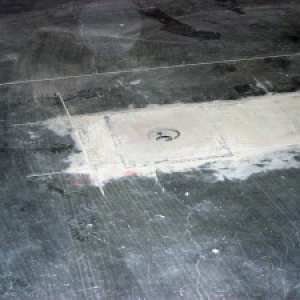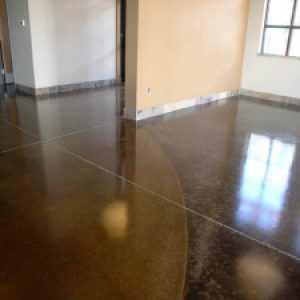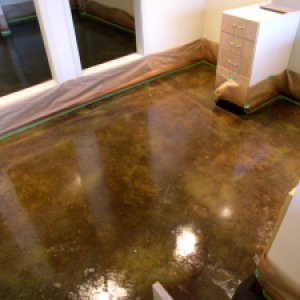Expert Tips for Preparing a Floor for Concrete Stain
Page top image size: 1000 x 500 px
Concrete stain is a technique used to upgrade the appearance of a concrete floor. By using an acid stain to achieve a chemical reaction between the acid and the minerals found in concrete or a water-based stain that will simply deposit it’s color into the pores of the concrete. The colors that can be produced from a concrete stain are incredibly beautiful, natural, and surprising. With concrete stain, concrete flooring can change dramatically in appearance without incurring major costs and inconvenience.
Moon Decorative has a range of SS Specialty products to fit every possible interior or exterior design seamlessly, such as SS Rainbow Stain, an acrylic stain that seals porous and cementitious-based substrates. And everything is available through our online store, where you also get a chance to view demo videos and go over technical data.
One of the main reasons for wanting to stain a concrete floor is to provide a finished floor surface by utilizing the existing concrete already poured and there. If you to uplift a room from dull and dirty to colors like tan, wheat, black, red, green, aqua blue, vintage umber, or even the color of cola you can choose a reactive acid stain.
Here are some expert tips for prepping a floor for concrete stain
- Clean, re-clean then clean again: A proper stain job starts with a clean and ready surface. Removal of glues, paints, caulking, mastic, or other contaminants is critical to a quality stain job. A great way to see if the floor is clean and clear of contaminants is to mist it with water and see if the floor darkens. If an area is still sealed the floor will not get dark and the water will bead up.
- Avoid acid washing a slab prior the acid staining: Do not use acid to wash the concrete. The acid will wash away the chemicals required for an acid stain to take. Instead use SS Surf Prep to open up the pores of the concrete and properly prepare the slab to accept the stain.
- Test an area: After the floor is clean and prepared for stain, test an area in an inconspicuous and install the stain and sealer just as you would on the actual floor. This will ensure you will be happy with the results.
- Use the proper patch material: If an area of the floor needs repair and patching, use an acrylic-modified product that will accept concrete stains, avoid epoxy patch that will repel stain. Even with the best patch job you must be aware that concrete patches will be apparent after staining and this is simply a part of concrete staining an existing slab.
- Tape and protect all walls and equipment with paper not plastic: It would seem that spraying liquid onto paper is not smart, but if sprayed properly the small amount of acid stain that hits the paper should absorb and dry fairly quickly. If you were to use plastic for protection you would notice that even a small amount of liquid that hits the plastic beads up and drips down. This causes a dark drip pattern around the room and doesn’t look professional.
Back to Blog


